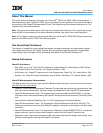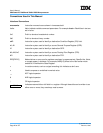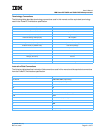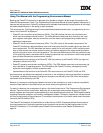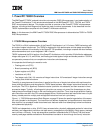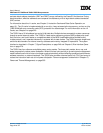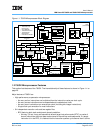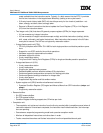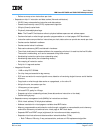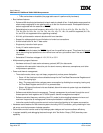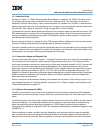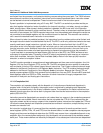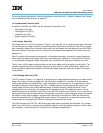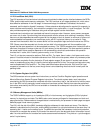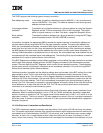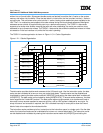
User’s Manual
IBM PowerPC 750GX and 750GL RISC Microprocessor
gx_01.fm.(1.2)
March 27,2006
PowerPC 750GX Overview
Page 27 of 377
– Retires as many as two instructions per clock.
• Separate on-chip L1 instruction and data caches (Harvard architecture).
– 32-KB, 8-way set-associative instruction and data caches.
– Pseudo least-recently-used (PLRU) replacement algorithm.
– 32-byte (8-word) cache block.
– Physically indexed/physical tags.
Note: The PowerPC Architecture refers to physical address space as real address space.
– Cache write-back or write-through operation programmable on a virtual-page or BAT-block basis.
– Instruction cache can provide four instructions per clock; data cache can provide two words per clock
– Caches can be disabled in software.
– Caches can be locked in software.
– Data-cache coherency (MEI) maintained in hardware.
– The critical double word is made available to the requesting unit when it is read into the line-fill buffer.
The cache is nonblocking, so it can be accessed during block reload.
– Nonblocking instruction cache (one outstanding miss).
– Nonblocking data cache (four outstanding misses).
– No snooping of instruction cache.
– Parity for L1 tags and caches.
• Integrated L2 cache.
– 1-MB on-chip ECC SRAMs.
– On-chip 4-way set-associative tag memory.
– ECC error correction for most single-bit errors; detection of remaining single-bit errors and all double-
bit errors.
– Copy-back or write-through data cache on a page basis, or for entire L2.
– 64-byte line size, two sectors per line.
– L2 frequency at core speed.
– On-board ECC; parity for L2 tags.
– Supports up to four outstanding misses (three data and one instruction or four data).
– Cache locking by way.
• Separate memory management units (MMUs) for instructions and data.
– 52-bit virtual address; 32-bit physical address.
– Address translation for virtual pages or variable-sized BAT blocks.
– Memory programmable as write-back or write-through, cacheable or noncacheable, and coherency
enforced or coherency not enforced on a virtual-page or BAT block basis.
– Separate IBAT and DBAT arrays (eight each) for instructions and data, respectively.
– Separate virtual instruction and data translation lookaside buffers (TLBs).
• Both TLBs are 128-entry, 2-way set associative, and use an LRU replacement algorithm.



